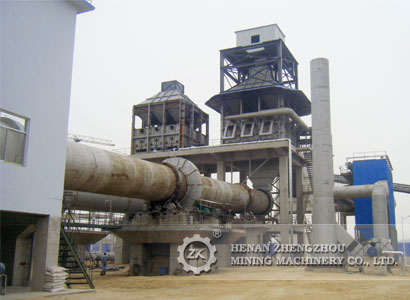Silicon Magnesium Smelting Process
Date:2016-12-20 Source:zk corp Views:
Silicon thermal method is divided into Pidgeon method, Bolzano method and Magnet Act. Pidgeon method Magnesium is first developed successfully by the Canadian chemist Pi Jiang Laveli (L.M.Pid2geon), and built the world's first Pidgeon Magnesium Plant in 1942 in the Haley, Ontario, Canada (Haley), and success. It has become the second largest method of magnesium.
The method comprises the following steps: calcining dolomite (MgCO3 • CaCO3) in a rotary kiln (calcination temperature is 1150-1250 DEG C), then pulverizing the dolomite with ferrosilicon powder (containing silicon 75%) and fluorite powder (95.8%), the ball (9.8 ~ 29.4MPa) was made into the heat-resistant steel reduction tank, and the crude magnesium was prepared by reduction in the reduction furnace at the temperature of 1190 ~ 1210 ℃ and vacuum of 1.33 ~ 10Pa. Flux refining, ingot, surface treatment, that is, metal magnesium ingots.
The silicon thermal reduction process is carried out under vacuum conditions. In fact, the reduction of magnesium vapor cannot reach equilibrium, the reduction zone of magnesium vapor pressure P is actually lower than the equilibrium pressure. When the magnesium vapor pressure into the magnesium crystallization zone is actually greater than 350Pa, the magnesium vapor is condensed into a liquid state and, if conditions continue to cool, and become solid. When P is practically less than 350 Pa, the magnesium vapor condenses directly into a solid state.
In order to reduce the oxidative combustion loss of magnesium and improve the refining yield, it is desirable to obtain dense magnesium crystals. The higher temperature of the crystallization zone, the lower the residual pressure, the denser the crystalline Mg. The experimental results show that when the residual pressure in the condenser is less than 13 Pa, the fibrous crystalline magnesium can be obtained, which is not related to the temperature of magnesium. When the residual pressure is higher than 26 Pa, dendritic magnesium is obtained. The upper limit of the dendritic magnesium is related to the temperature of the condenser. The higher the temperature, the higher the upper limit of the residual pressure. At temperatures close to 973 K and 2266 Pa, magnesium becomes a fine and brittle network. At a higher residual pressure and a lower temperature, the magnesium becomes powdered. In order to improve the condensation efficiency, it seems that the condenser temperature is a little lower, but the temperature is low, the crystalline state of magnesium is not good. The temperature is too low, magnesium vapor too late to diffuse to the condensation surface in the space to condense down to form powder magnesium.
Silicon magnesium smelting process can use natural gas, coal gas, heavy oil and alternating current as heat source. The process flow and equipment are simple, the investment in construction is less and the scale of production is flexible. It can be used widely as raw material for dolomite resources with wide distribution and abundant reserves. The purity of finished magnesium is high; its furnace body is small, the construction is easy, and the technical difficulty is small, so it attracts more and more investors.


